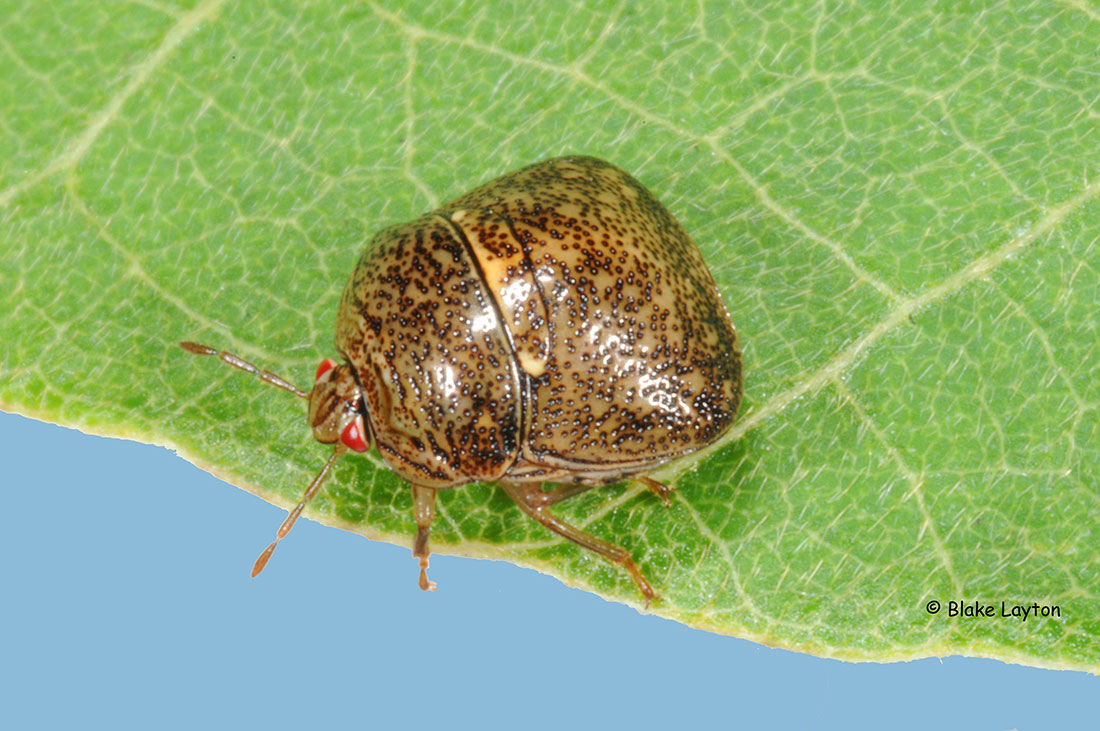Kudzu Bug, No. 27
Related News
May 11, 2006
March 9, 2006
January 12, 2006
July 28, 2005
March 10, 2005

Order: Hemiptera
Family: Plataspididae
Kudzu bugs are unique-looking insects. When viewed from above, they are roughly square in shape, a little less than ¼ inch long, and have red eyes. These non-native insects first entered the US in 2009 around Atlanta, GA and were first detected in Vicksburg, Mississippi in 2012. Since then, they have spread throughout the state. As their name suggests, these little bugs do eat kudzu, and a small patch of kudzu can produce hundreds of thousands of bugs. Unfortunately, kudzu bugs do not harm kudzu very much, but heavy infestations can cause significant yield losses in soybeans. In the fall of the year, beginning right about now, kudzu bugs begin invading buildings and automobiles in search of a warm place to spend the winter, and huge numbers may accumulate on buildings located near large plantings of kudzu or soybeans, causing great nuisance and inconvenience to the owners. The problem is made worse by the strong, unpleasant odor these insects exude and the fact that direct contact can cause skin blisters and serious eye irritation.
Control: Kudzu bugs accumulating on the outsides of buildings can be killed by spraying with a properly labeled pyrethroid insecticide (bifenthrin, cyfluthrin, and permethrin are examples), but this will not prevent invasion of buildings with poor insect exclusion. The best defense against fall-invading insect pests is to make buildings as insect-proof as possible during the spring and summer months—before the fall invasion begins. This is far preferable to having to deal with kudzu bugs after they have gotten inside, and good exclusion practices will help keep out other home-invading insects and spiders as well. See Bug-Wise Newsletter No. 7 of 2014 for more information on making buildings bug-proof. Insecticides are not recommended for indoor control; a vacuum is the best treatment option once bugs are inside. Avoid crushing kudzu bugs or direct contact with skin.
Blake Layton, Extension Entomology Specialist, Mississippi State University Extension Service.
The information given here is for educational purposes only. Always read and follow current label directions. Specific commercial products are mentioned as examples only and reference to specific products or trade names is made with the understanding that no discrimination is intended to other products that may also be suitable and appropriately labeled.